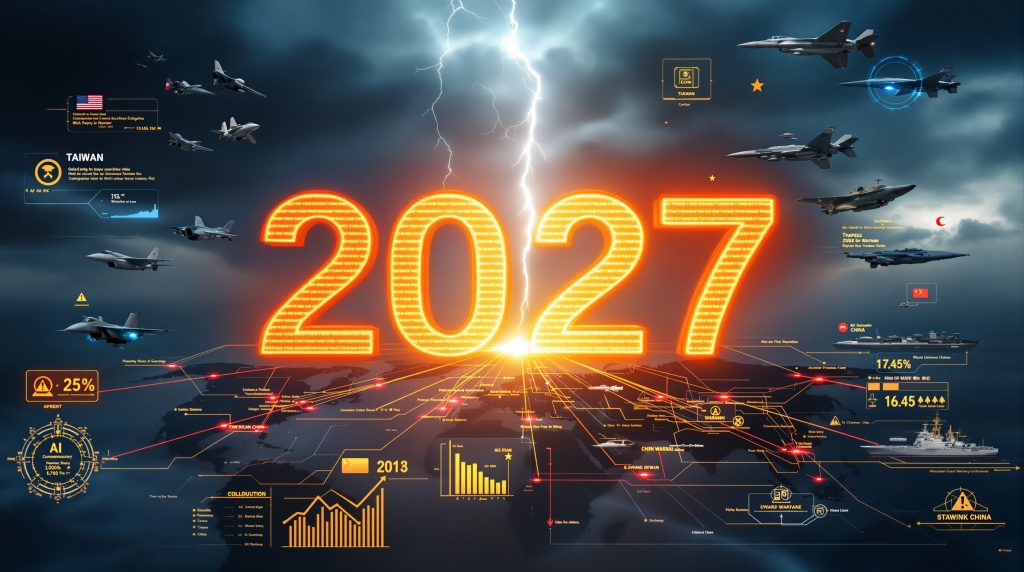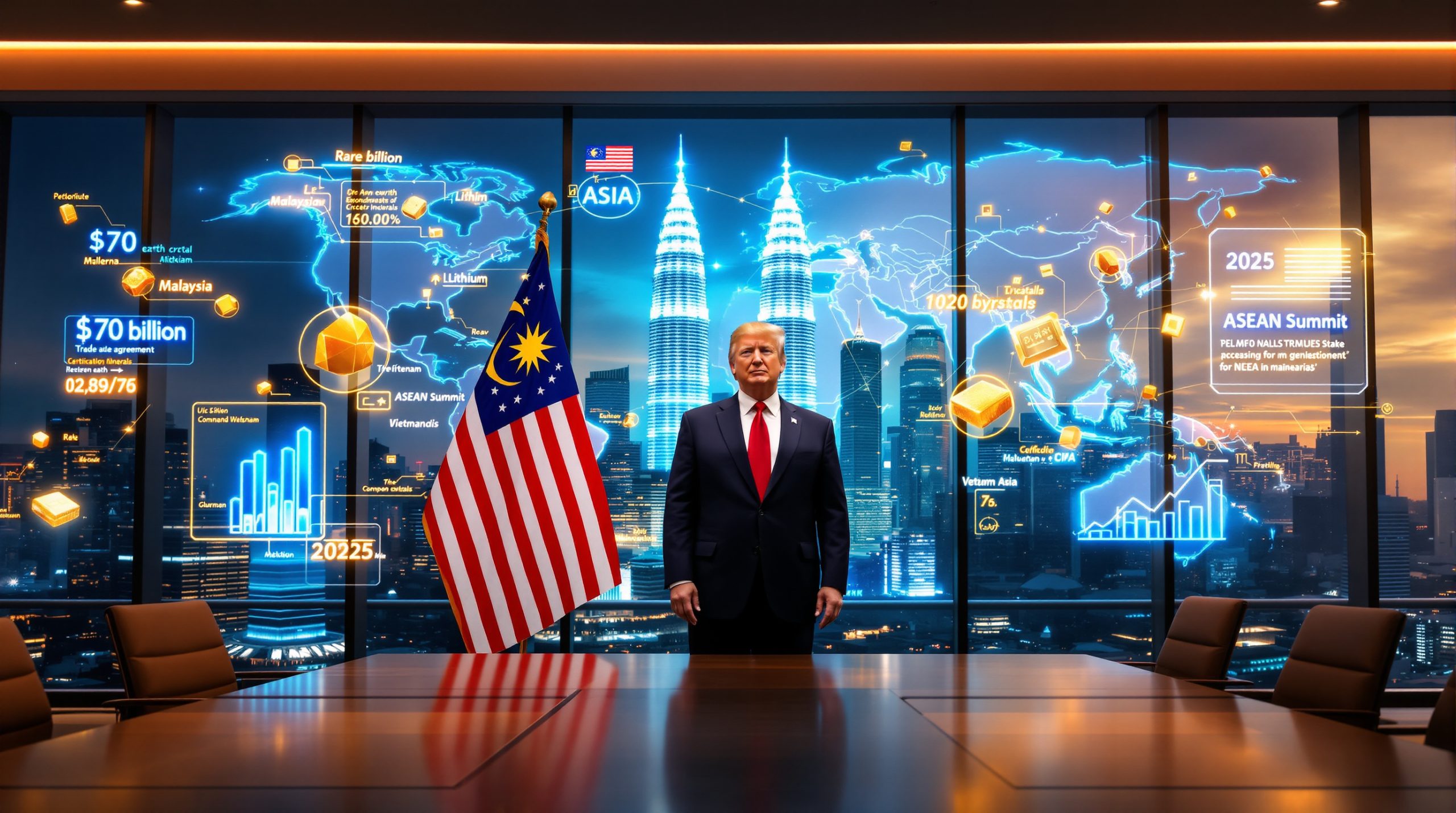What Makes 2027 a Critical Year for US-China Relations?
Military analysts and defence experts increasingly point to 2027 as a pivotal year for potential war between US and China 2027, though the reasoning behind this specific timeframe requires careful examination. The date represents the convergence of multiple strategic factors rather than any single catalyst, creating what some describe as a perfect storm of geopolitical tensions.
Furthermore, the US‑China trade war impact on global markets has already demonstrated how economic competition between these superpowers can reshape international commerce patterns.
China's Military Modernisation Timeline
China has been pursuing an ambitious military transformation programme, though claims about specific "intelligentised warfare capabilities by 2027" require verification from official sources. What remains clear is that Beijing has invested heavily in modernising the People's Liberation Army (PLA) across multiple domains, including artificial intelligence integration, hypersonic weapons development, and advanced naval capabilities.
The Chinese shipbuilding industry has demonstrated remarkable capacity, producing more naval vessels in recent years than all other nations combined, according to the International Institute for Strategic Studies. This industrial advantage represents a significant shift in the global balance of naval power, particularly relevant given the maritime nature of potential Pacific conflicts.
The Taiwan Factor
Taiwan's strategic importance extends far beyond its geographical position. The island produces approximately 92% of advanced semiconductors globally and over 60% of all semiconductors, making it arguably the most critical chokepoint in the global technology supply chain. Taiwan Semiconductor Manufacturing Company (TSMC) alone represents a cornerstone of worldwide electronics production.
Financial experts suggest that China views Taiwan's reunification as unfinished business from the Chinese Civil War. The combination of growing military capabilities and political pressure creates a window where Beijing might calculate it possesses both the means and motivation to act decisively. However, China is preparing for war in 2027 according to several geopolitical analysts who examine the strategic implications of this timeline.
How Are Both Nations Preparing for Potential Conflict?
The military preparations on both sides reflect the seriousness with which defence planners view potential conflict scenarios. These preparations span technological development, alliance building, and industrial capacity enhancement.
US Military Preparations and Strategic Positioning
The United States has significantly strengthened its Pacific presence through multiple initiatives. Additionally, the US military in the Pacific is rapidly gearing up for potential war with China, with senior military officials acknowledging the urgency of preparations.
- AUKUS Alliance: The trilateral security partnership between Australia, the United Kingdom, and the United States, established in September 2021, focuses specifically on Indo-Pacific strategic competition
- Quad Enhancement: The Quadrilateral Security Dialogue includes the US, Japan, Australia, and India, representing a collective response to regional challenges
- Advanced Military Technologies: Investment in autonomous systems, long-range precision weapons, and next-generation naval platforms
- Alliance Network Expansion: Deepening defence cooperation with traditional allies whilst cultivating new partnerships across the region
China's Strategic Advantages and Vulnerabilities
China possesses several significant advantages in a potential conflict scenario, primarily centred on manufacturing dominance and geographic proximity. However, these strengths come with corresponding vulnerabilities that could impact long-term sustainability.
China's Manufacturing Control:
China maintains dominant positions across critical supply chains that would be essential during any extended conflict. This includes control over approximately 70% of global rare earth element production and processing, according to the US Geological Survey. These materials are essential for advanced military systems, from guided missiles to electronic warfare equipment.
The nation's industrial base extends beyond raw materials to finished products. As one financial analyst noted, the challenge facing Western nations is that China "makes all your stuff" and could theoretically restrict exports of critical components, from drone motors to rare earth elements, creating immediate supply chain crises.
| Dependency Area | US Vulnerability | Chinese Vulnerability | Impact Level |
|---|---|---|---|
| Semiconductors | Taiwan production reliance (92% advanced chips) | Advanced chip design technology access | Critical |
| Rare Earth Elements | 85% import dependency | Export revenue and processing dominance | High |
| Manufacturing Components | Consumer and military goods production | Technology component imports | Significant |
| Energy Security | Strategic petroleum reserves | 70% crude oil import dependency | Moderate |
What Role Would Economic Warfare Play?
Economic conflict would likely precede any military engagement, with both nations possessing weapons capable of inflicting severe damage before the first shot is fired. The interconnected nature of modern supply chains creates vulnerabilities that neither side can easily address in the short term.
Supply Chain Dependencies and Critical Chokepoints
The semiconductor dependency represents perhaps the most immediate vulnerability. Taiwan's TSMC produces the majority of advanced chips powering everything from smartphones to military systems. Any disruption to this production would cascade through global technology markets within weeks.
Energy dependencies create additional pressure points. China imports approximately 70% of its crude oil, according to the US Energy Information Administration, making it vulnerable to naval blockades. Conversely, the US Strategic Petroleum Reserve contains approximately 371 million barrels as of late 2024, providing some buffer against supply disruptions.
Industrial Base Considerations
The conflict would test each nation's ability to rapidly scale military production. Critics argue that Western nations have allowed their manufacturing base to atrophy, creating strategic vulnerabilities. As one observer noted, "Can't make ships anymore… Can't make a light bulb" represents a stark assessment of American industrial decline.
This industrial imbalance could prove decisive in any extended conflict. Modern warfare requires vast quantities of precision munitions, electronic components, and replacement parts. The nation capable of sustaining production whilst denying resources to opponents gains a crucial advantage.
How Could AI and Technology Impact the Conflict?
Artificial intelligence represents a potential game-changing factor in future conflict, though some claims about technological advantages require careful scrutiny. The race for AI supremacy involves both technical capabilities and the computational infrastructure needed to deploy these systems effectively.
Technological Competition and Military Applications
Both nations are investing heavily in AI-powered military systems, recognising their potential to determine conflict outcomes. The United States currently leads in commercial AI development, with companies like OpenAI and Google pioneering large language models. China has responded with significant investments in AI research and development through companies like Baidu, Alibaba, and Tencent.
Critical AI Military Applications Include:
- Autonomous weapons systems and tactical decision-making
- Cyber warfare capabilities and information operations
- Logistics optimisation and supply chain management
- Intelligence analysis and strategic planning algorithms
- Electronic warfare and communications jamming
The computational requirements for advanced AI systems create additional dependencies on semiconductor production, further emphasising Taiwan's strategic importance. Training large language models requires billions of dollars in computing resources, making the underlying chip supply chain a critical vulnerability for both sides.
Claims About Language Advantages in AI Development
Some analysts have suggested that English language structure provides computational advantages in AI development, claiming lower entropy compared to Chinese. However, this assertion lacks peer-reviewed verification from linguistics research and should be considered speculative rather than established fact.
What remains verified is that both nations possess significant AI capabilities, with the United States currently maintaining advantages in commercial development whilst China focuses on military applications and industrial implementation.
What Would Be the Global Economic Consequences?
A potential war between US and China 2027 would trigger unprecedented disruptions across global markets, with consequences extending far beyond the immediate participants. The scale of potential economic damage reflects the deep integration of both nations into worldwide supply chains.
Commodity Market Disruptions and Price Scenarios
Financial analysts have projected dramatic commodity price increases in conflict scenarios, though these represent speculative estimates rather than precise forecasts. In addition, gold prices analysis shows that precious metals currently trading around historical highs could potentially reach extreme levels as investors seek safe-haven assets.
Projected Market Disruptions:
- Precious Metals: Potential gold price scenarios ranging from $8,000-$10,000 per ounce during peak conflict periods
- Industrial Metals: Critical shortages in copper, aluminium, and specialised alloys essential for military production
- Energy Markets: Volatile pricing due to supply route disruptions and strategic reserve drawdowns
- Agricultural Commodities: Food security concerns as trade relationships fragment
Furthermore, several oil price rally factors could contribute to significant energy market volatility during any conflict scenario.
Disclaimer: These price projections represent speculative scenarios based on expert opinion rather than consensus economic forecasts.
Currency Systems and Financial Fragmentation
The conflict could accelerate trends toward monetary system fragmentation, with nations potentially forced to choose between dollar-denominated and yuan-denominated trade systems. Gold could emerge as a neutral reserve asset for international transactions, particularly among nations seeking to avoid taking sides in the conflict.
International trade represents approximately 30% of global GDP according to World Bank data, meaning any significant disruption would have worldwide implications. The semiconductor shortage of 2021-2022, which caused over $210 billion in economic losses according to the US Semiconductor Industry Association, provides a preview of potential supply chain impacts.
How Might European Nations Respond?
European countries face complex strategic calculations in any US-China conflict scenario. Whilst historically aligned with the United States through NATO and shared democratic values, Europe maintains substantial economic relationships with China that complicate straightforward alliance decisions.
Europe's Strategic Dilemma
The European Union conducts approximately €586 billion in annual trade with China according to Eurostat, representing a significant economic relationship that would be difficult to sever quickly. Combined EU-27 GDP of roughly €17 trillion provides substantial economic weight, though this wealth depends partly on global trade integration.
Financial analysts note that Europe faces genuine strategic challenges in balancing economic interests with security concerns. Some observers suggest that negative assessments of European capabilities may themselves represent information warfare, cautioning that "a lot of that comes out of America" and should be evaluated critically. Meanwhile, EU raw materials supply concerns highlight Europe's vulnerabilities in securing essential resources during any potential conflict.
Rearmament and Defence Spending Trends
European defence spending has increased significantly since 2022, driven initially by the Ukrainian conflict but increasingly focused on broader security challenges:
- Germany: Announced a €100 billion special fund for military modernisation in February 2022
- Eastern European NATO Members: Poland, Baltic states, and others have exceeded the 2% NATO defence spending target
- France and UK: Both nations have increased defence budgets for 2023-2025 periods
- Industrial Base: European defence manufacturers are experiencing increased demand and investment
However, critics argue that European industrial capacity faces regulatory and financial constraints that could limit rapid military production scaling. The challenge of rebuilding defence industrial capacity represents a "super tanker" that requires time to change direction effectively.
What Are the Potential Conflict Scenarios?
Military strategists have identified multiple pathways through which tensions could escalate into active conflict. These scenarios range from limited engagements over specific territorial disputes to comprehensive military confrontation with global implications.
Limited Engagement Possibilities
Not all conflict scenarios involve immediate full-scale warfare. Potential escalation pathways include:
- Economic Warfare Intensification: Trade restrictions, technology transfer bans, and financial system fragmentation
- Cyber Attacks on Infrastructure: Targeting power grids, communications networks, and financial systems
- Naval Incidents in Disputed Waters: Confrontations in the South China Sea or Taiwan Strait
- Proxy Conflicts: Competition through allied nations or third-party conflicts
Full-Scale Conflict Implications
A comprehensive military conflict between the world's two largest economies would reshape global geopolitics permanently. Historical precedents from major power conflicts suggest casualties could reach millions, with economic consequences lasting decades.
Modern warfare dynamics, demonstrated in the Ukrainian conflict, show how relatively inexpensive technologies can neutralise expensive military systems. $100 commercial drones have successfully destroyed $40 million tanks, suggesting that future conflicts may not favour traditional military advantages.
Can Diplomatic Solutions Prevent Conflict?
Despite mounting tensions, diplomatic channels remain active between Washington and Beijing, though structural competition over global influence creates persistent friction points. The effectiveness of diplomatic solutions depends on both sides' willingness to find acceptable compromises on core issues.
Current Diplomatic Efforts and Challenges
High-level diplomatic engagement continues through official State Department and Defence Department channels, though progress remains limited on fundamental disagreements. The Taiwan question represents the most intractable issue, with China viewing reunification as non-negotiable whilst the US maintains strategic ambiguity about its defence commitments.
The Role of International Organisations
Multilateral institutions like the United Nations, World Trade Organisation, and regional bodies could play crucial roles in conflict prevention, though their effectiveness depends on great power cooperation. Historical experience suggests these organisations work best when major powers choose to use them, but become less effective when fundamental interests clash.
How Should Investors and Businesses Prepare?
The potential for significant market volatility and supply chain disruptions requires careful consideration in long-term strategic planning. Both investors and businesses need contingency plans for various escalation scenarios whilst maintaining operational flexibility.
Portfolio Diversification Strategies
Investment professionals recommend several approaches for managing geopolitical risk:
- Precious Metals Allocation: Gold and silver as portfolio insurance against currency instability and conflict scenarios
- Geographic Diversification: Spreading investments across regions to reduce concentration risk
- Commodity Exposure: Essential materials that remain valuable regardless of geopolitical developments
- Currency Hedging: Protection against major currency fluctuations during crisis periods
Investment Disclaimer: These represent general strategic considerations rather than specific financial advice. Individuals should consult qualified financial professionals for personalised guidance.
Supply Chain Risk Management
Businesses with exposure to US-China trade should develop comprehensive contingency plans:
- Alternative Sourcing: Identifying suppliers in multiple geographic regions
- Manufacturing Diversification: Reducing dependence on single-country production
- Strategic Inventory: Building buffer stocks of critical components
- Financial Hedging: Currency and commodity price protection strategies
The semiconductor shortage demonstrated how quickly supply chain disruptions can cascade through entire industries, making resilience planning essential for business continuity.
What Are the Long-Term Implications for Global Order?
Regardless of whether military conflict occurs, the current tensions are accelerating fundamental changes in the international system. These shifts will reshape global governance, economic relationships, and technological development for decades.
Multipolar World Emergence
The transition from American hegemony to a multipolar world order appears irreversible, regardless of specific conflict outcomes. This shift requires new frameworks for international cooperation and dispute resolution, as existing institutions were designed for a different power distribution.
Regional powers are already adapting to this new reality by developing independent capabilities and avoiding excessive dependence on any single great power. This trend toward strategic autonomy reflects recognition that great power competition creates risks for smaller nations caught between competing systems.
Technology and Innovation Competition
The technological competition between the US and China will likely continue regardless of military outcomes, driving innovation in artificial intelligence, quantum computing, biotechnology, and space exploration. This competition could benefit humanity through accelerated technological development, similar to how Cold War competition drove space exploration and computer development.
However, technological decoupling could also fragment global innovation networks, potentially slowing overall progress by reducing collaborative research and development. The balance between competition and cooperation will significantly influence technological advancement rates.
Investment Implications and Market Psychology
The intersection of geopolitical risk and market dynamics creates complex challenges for investors navigating uncertain times. Understanding both the fundamental economic drivers and psychological factors influencing markets becomes crucial during periods of heightened tension.
Commodity Super Cycle Potential
The combination of AI development demands and potential conflict scenarios could drive what some analysts describe as a commodity super cycle. Artificial intelligence requires vast quantities of materials:
- Copper: Essential for data centre infrastructure and electrical systems
- Rare Earth Elements: Critical for advanced electronics and defence systems
- Silver: Required for solar panels and electronic components
- Lithium: Necessary for energy storage and mobile systems
- Energy: Massive power requirements for AI computation and industrial production
Consequently, critical minerals and energy security considerations are becoming increasingly important as nations recognise the strategic value of resource independence.
As one financial expert noted, "you can't do it without copper, you can't do it without energy. You can't do it without water. You can't do it without aluminium. Can't do it without silver, can't do it without rare earths."
Market Timing and Volatility Patterns
Financial markets often exhibit specific patterns during geopolitical crises, though timing remains unpredictable. Technical analysis suggests that major repricing events create volatility ranges that can persist for weeks or months before the next significant move.
Understanding market psychology during crisis periods helps investors navigate emotional decision-making. When major repricing occurs, markets typically establish new trading ranges whilst uncertainty resolves. Patient investors who can withstand volatility often find opportunities during these transition periods.
The AI Revolution and Military Applications
The artificial intelligence revolution represents more than technological advancement; it constitutes a fundamental shift in economic and military power comparable to the Industrial Revolution. Understanding these implications helps contextualise current geopolitical tensions.
Structural Economic Changes
AI development requires unprecedented computational resources, creating new dependencies and vulnerabilities. The nations controlling advanced semiconductor production and AI development infrastructure gain significant advantages across multiple domains.
The transformation parallels historical technology adoption cycles. Just as the steam engine eliminated agricultural employment whilst creating industrial opportunities, AI may reshape entire economic sectors. However, the speed of change appears faster than previous technological revolutions, compressing adaptation timelines.
Military and Strategic Applications
Military applications of AI extend beyond autonomous weapons to encompass every aspect of modern warfare:
- Logistics and Supply Chain Optimisation: AI systems can manage complex military supply networks more efficiently than human operators
- Intelligence Analysis: Pattern recognition capabilities that exceed human analytical capacity
- Electronic Warfare: Advanced jamming and communications disruption capabilities
- Cyber Operations: Automated network penetration and defence systems
The nation achieving decisive AI advantages in military applications could potentially overcome traditional numerical or geographical disadvantages, making the current technological race strategically critical.
European Economic Reality vs. Perception
The economic situation in Europe requires nuanced analysis, as information warfare and propaganda can distort assessments of actual capabilities and challenges. Separating factual economic data from narrative manipulation becomes essential for accurate strategic evaluation.
Economic Fundamentals and Capabilities
European economic statistics reveal a more complex picture than simplified decline narratives suggest:
- Combined Economic Power: EU-27 GDP of approximately €17 trillion represents substantial economic weight comparable to the United States
- Population Base: Over 500 million people provide significant human capital resources
- Industrial Capacity: Advanced manufacturing capabilities across multiple sectors, though facing regulatory and investment challenges
- Technological Innovation: Strong positions in specific industries including automotive, aerospace, and renewable energy
Information Warfare Considerations
Financial analysts increasingly recognise that economic assessments may be influenced by information operations designed to shape perceptions. As one expert cautioned, negative narratives about European capabilities may represent "American propaganda" designed to emphasise US dominance.
This recognition doesn't negate genuine European challenges but suggests the importance of evaluating information sources when assessing economic and strategic capabilities. Both allies and competitors engage in information warfare that can distort external perceptions.
Natural Intelligence vs. Natural Stupidity
The current geopolitical environment reflects what some analysts describe as a "foot race between AI and natural stupidity," where technological advancement competes with poor human decision-making to determine outcomes.
Cooperative vs. Competitive Frameworks
Historical periods of international cooperation, where nations "do what they're best at and everyone can be friends," represent what might be called natural intelligence applied to global governance. This approach maximises efficiency through specialisation and comparative advantage.
However, current trends toward economic nationalism and strategic competition represent a shift toward what some characterise as "natural stupidity" where geopolitical considerations override economic efficiency. This transition creates both risks and opportunities across commodity markets and industrial sectors.
Technology as a Stabilising Force
Artificial intelligence may serve as a counterbalance to poor human decision-making by providing more rational analysis of complex situations. AI systems, when properly designed, can identify optimal solutions without emotional bias or political considerations that often drive human decision-makers toward suboptimal outcomes.
The hope is that AI development progresses rapidly enough to provide decision-making tools that prevent catastrophic conflicts, though this remains speculative given the current pace of both technological development and geopolitical tensions.
Rearmament Dynamics and Historical Parallels
The current global rearmament trend creates momentum that may become difficult to control, similar to the dynamics that contributed to World War I. Understanding these historical parallels helps assess current risks and potential outcomes.
Industrial and Military Momentum
Rearmament programmes create their own momentum once initiated. Defence industries scale production, military capabilities expand, and strategic thinking shifts toward potential employment of these capabilities. As one observer noted, these represent "super tankers" that require significant time and effort to change direction.
Current Rearmament Indicators:
- European Defence Spending: Significant increases across NATO members following the Ukrainian conflict
- US Military Modernisation: Substantial investments in Pacific-focused capabilities
- Chinese Military Expansion: Continued PLA modernisation and capability development
- Regional Arms Races: Increased defence spending across Indo-Pacific nations
Historical Warning Signs
The parallel to pre-World War I dynamics is concerning, where military preparations created expectations and pressures that made conflict increasingly likely. Once nations invest heavily in military capabilities, political leaders may feel pressure to demonstrate their effectiveness or justify the expenditure.
Military planners increasingly discuss casualty expectations in the millions, suggesting that such outcomes are "already baked into their brains" and represent accepted planning assumptions rather than scenarios to be avoided.
Conclusion: Navigating the Perfect Storm
The convergence of factors pointing toward potential war between US and China 2027 represents one of the most significant geopolitical risks in modern history. Whilst the exact timeline remains uncertain, the underlying dynamics creating this risk appear to be accelerating rather than diminishing.
The combination of military modernisation timelines, Taiwan's strategic importance, economic warfare capabilities, and artificial intelligence competition creates multiple pathways toward confrontation. Each factor alone might be manageable through diplomacy, but their convergence creates what analysts describe as a perfect storm of escalating tensions.
For investors, businesses, and individuals, understanding these dynamics enables better preparation for various outcomes. Whether through portfolio diversification, supply chain resilience, or simply maintaining awareness of developing trends, proactive planning becomes essential in an increasingly uncertain world.
The hope remains that artificial intelligence development progresses rapidly enough to provide tools for better decision-making, whilst diplomatic efforts find acceptable compromises on core issues. However, the momentum toward potential war between US and China 2027 appears to be building across multiple domains, making the next few years critical for determining whether humanity can navigate these challenges peacefully.
The stakes extend far beyond the immediate participants. A US-China conflict would reshape global governance, economic systems, and technological development for decades. Understanding these implications helps contextualise current events and prepares observers for the fundamental changes that may lie ahead, regardless of specific outcomes.
Disclaimer: This analysis represents assessment of publicly available information and expert opinions rather than definitive predictions. Geopolitical events involve numerous variables that make precise forecasting impossible. Readers should conduct their own research and consult qualified professionals for investment, business, or strategic planning decisions.
Looking to Diversify Your Portfolio During These Uncertain Times?
Discovery Alert's proprietary Discovery IQ model delivers real-time alerts on significant mineral discoveries across critical commodities like copper, rare earth elements, and precious metals that could benefit from geopolitical tensions. With major discoveries historically generating exceptional returns and commodity prices potentially facing unprecedented volatility, explore Discovery Alert's discoveries page to understand how strategic positioning in mineral exploration could provide portfolio protection whilst capturing upside opportunities.




